What is Software Development Life Cycle (SDLC)?

SDLC is a systematic process for constructing software that focuses on ensuring the quality and correctness of the software produced. This iterative process is designed for software projects that consist of multiple phases for building and running software applications. SDLC allows for an analysis of development results each step of the way while also helping with measurement and improvement. SDLC's process objective is to produce high-quality software while meeting customer expectations. Every phase has its process and deliverables that feed into the next stage over the complete life cycle of software, from inception to retirement of the product. Adopting SDLC methodologies leads to software development in a systematic and disciplined manner.
Why SDLC?
The purpose of SDLC is to deliver a high-quality product per the customer's requirement. SDLC has defined its phases: Requirement gathering, Designing, Coding, Testing, Deployment, and Maintenance.
It is essential to adhere to the steps to provide the product systematically. Each task is designed to create and deploy a software application while preventing waste and increasing efficiency.
Monitoring the process is an essential part of SDLC, as it ensures companies that everything is timely, budgets are adhered to, and the product being developed continues to be a viable investment.
SDLC Phases
.avif)
Phase 1: Requirement Gathering and Analysis
A core understanding or knowledge of the customer requirements and objectives is essential before building a product; during this phase, crucial information is collected from the customer to develop a product per their expectations, and the development team must resolve any ambiguities in this phase before advancing the next.
Business analysts and Project Managers set up meetings with the customer to work together, collecting all the necessary information, including the business aspects of the application, who will be the end-user, and the product's purpose.
The requirement analysis is the initial stage in the SDLC process; senior team members conduct it with inputs from stakeholders and domain experts in the field, planning for the quality assurance and identifying the risks involved. This step provides a clearer picture of the project's scope and aims to discover anticipated issues, opportunities, and directives involved in the project.
After the requirement analysis is completed, the software need is defined and documented. This process is centered around the Software Requirement Specification document, or 'SRS' document, which includes detailed information about every aspect to be designed and developed during the project life cycle.
Phase 2: Design
In this phase, the required information gathered in the SRS document is used as input, and software architecture is derived for implementing system development. System and software design documents are prepared per the requirement specification document, which defines the overall system architecture. Two kinds of design documents are developed in this phase:
High-Level Design (HLD)
A high-level design document contains a brief description and name for each module, accompanied by an outline of its functionality. It also details interface relationships, and dependencies between them, identifies database tables and their essential elements and provides an integrated architecture diagram with detailed specifications regarding the multiple technologies involved.
Low-Level Design (LLD)
A low-level design document describes the functional logic of the modules, database tables, and interfaces. It addresses all types of dependency issues, error messages are typified, and the input and output of every module are defined.
Phase 3: Implementation or Coding
Once the development teams get the Design document, the coding or implementation phase begins. In this step, software design definitions are translated into source code, and all components of the application or system are implemented in this phase.
Developers write the code for the entire application using the chosen programming language, framework, and platform.
Tasks, divided into units or modules, are assigned to the various developers during the most extensive part of the SDLC process.
Development teams must follow predefined coding guidelines using programming tools like compilers, interpreters, and debuggers to generate and implement the code.
Phase 4: Testing
Once coding and implementation are complete, the modules are released for testing, and the developed software is tested thoroughly, with any defects found assigned to developers for any necessary fixes.
The development team fixes any bugs found and implements the new version on the testing environment, allowing the QA team to perform a re-test.
This stage has multiple successive iterations until the software reaches a stable and working condition according to the business needs of the application.
Re-testing and regression testing is done until the software meets the customer's expectation, with testers referring to SRS documents to ensure that the software meets the customer's requirements.
Phase 5: Installation/Deployment
Once the product performs as required in the testing environment, it is deployed in the production environment or, depending on the customer's requirements, to the first UAT (User Acceptance testing) environment.
In the case of UAT, a replica production environment is created where the developers and the customer test the application.
Suppose the customer finds the application as was defined in the requirements detailed in the first phase of the process.
In that case, the customer provides a sign-off to go live, and the final deployment process to production environments starts.
Phase 6: Maintenance
After the deployment of a product in production environments, the developers take care of the product's maintenance and enhancements.
Once the system is deployed and end users start interacting with the developed system, bugs from unexpected or untested scenarios are reported and fixed.
Newer versions of the software are released due to technological upgrades, and the product is enhanced by adding new features.
Ensuring that requirements continue to be met and that the application continues to perform as specified in the first phase is the main focus of the Maintenance phase.
Popular SDLC Models
There are many models of real-world application of the concepts of SDLC software development; here are some of the most important.
Waterfall model in SDLC
In this widely accepted SDLC approach, also known as the linear sequential model, the entire software development process is divided into the specific phases of SDLC, where one phase's outcome acts as the next phase's input.
This model is documentation-intensive, with earlier phases documenting what needs to be performed in the subsequent stages.

Incremental Model in SDLC
The incremental model is not an individual model of its own but a series of waterfall cycles in which requirements are grouped at the start of the project.
For each group, the SDLC model is followed to develop the product.
Each release adds more functionality until all requirements are met, with every subsequent cycle becoming the maintenance phase for the previous software release.
Each iteration goes through the main phases (Requirement Analysis, Designing, Coding, and Testing). Once the iteration is completed, the product is verified and delivered to the customer for evaluation and feedback.
Customer feedback is implemented along with any newly added feature in the next iteration. The final build holds all the product features once all the iterations are completed.
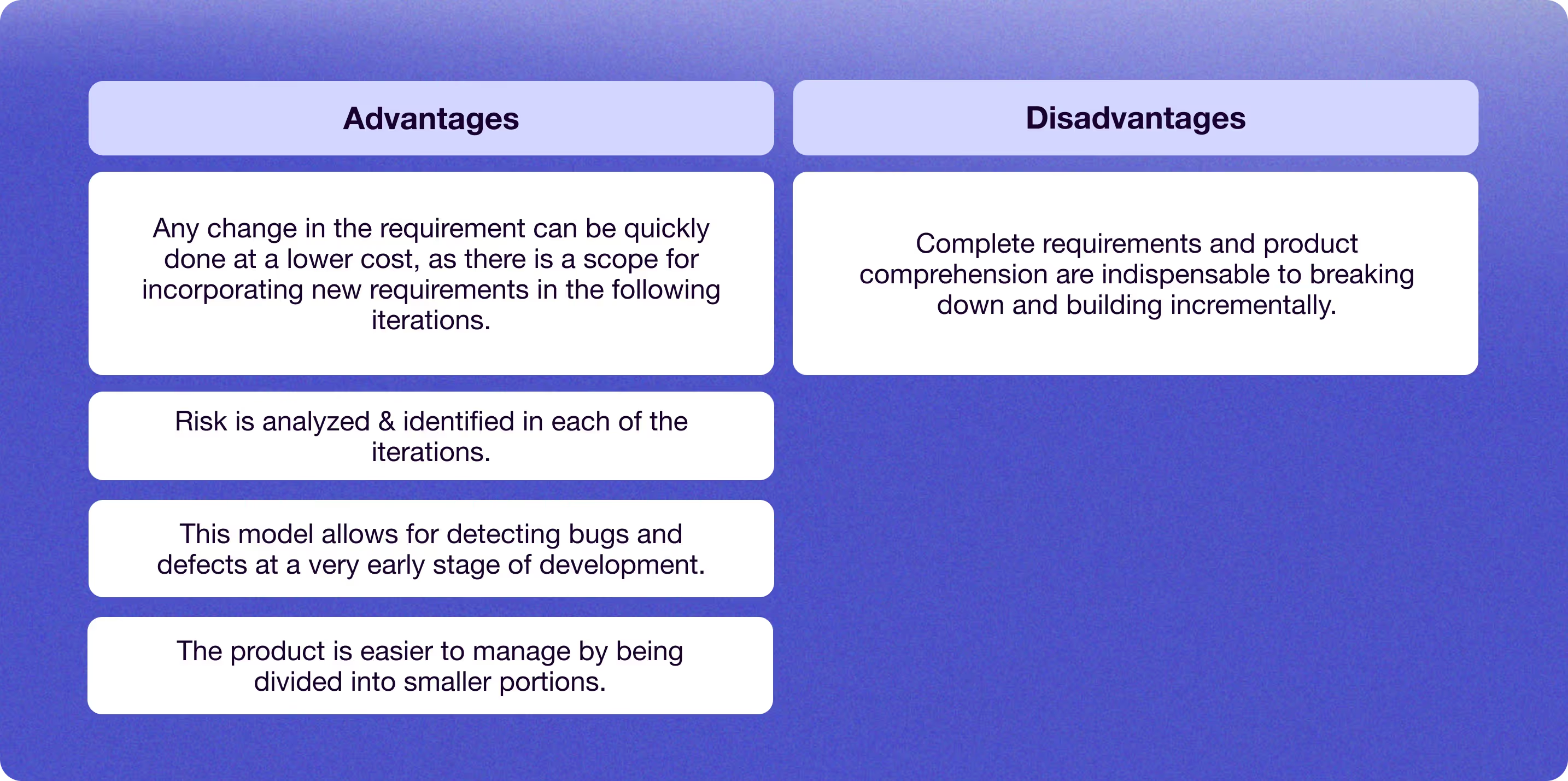
V-Model in SDLC
Often referred to as the Verification and Validation Model, in this SDLC model, testing and development phases are planned in parallel, with verification phases on one side and validation phases on the other, meaning development and testing coincide. V and waterfall models are essentially the same, except that test planning and testing starts early in V-Model.
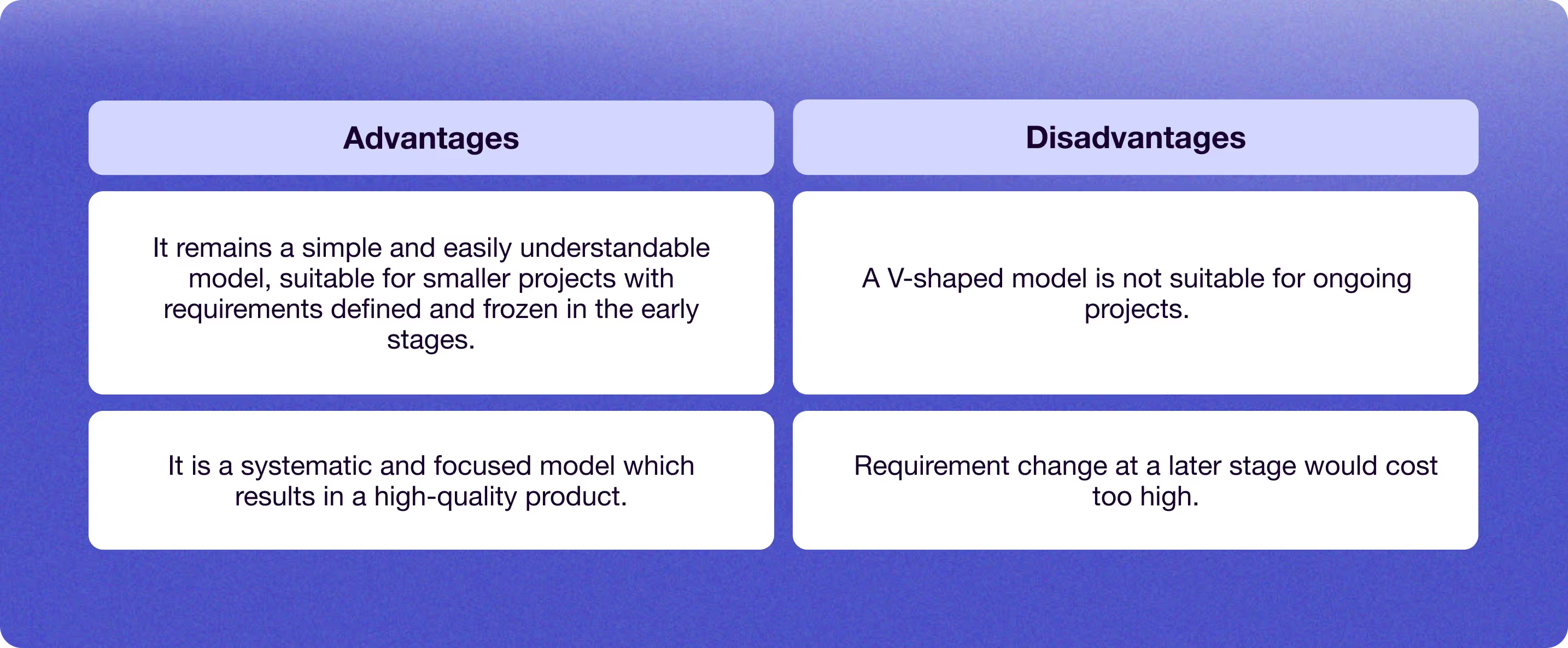
Spiral Model
Defined as a risk-driven process, this SDLC model allows teams to embrace elements of various process models like waterfall, incremental, v-model, etc.
Adopting the best aspects of the prototyping and waterfall models combines rapid prototyping and concurrency into design and development activities.
The Spiral Model includes iterative and prototype approaches, as spiral model phases are followed in the iterations. Each loop represents an SDLC process phase; the initial loop consists of the requirement gathering & analysis phase, including Planning, Risk analysis, development, and evaluation.
The next loop is Designing, followed by implementation & then testing.
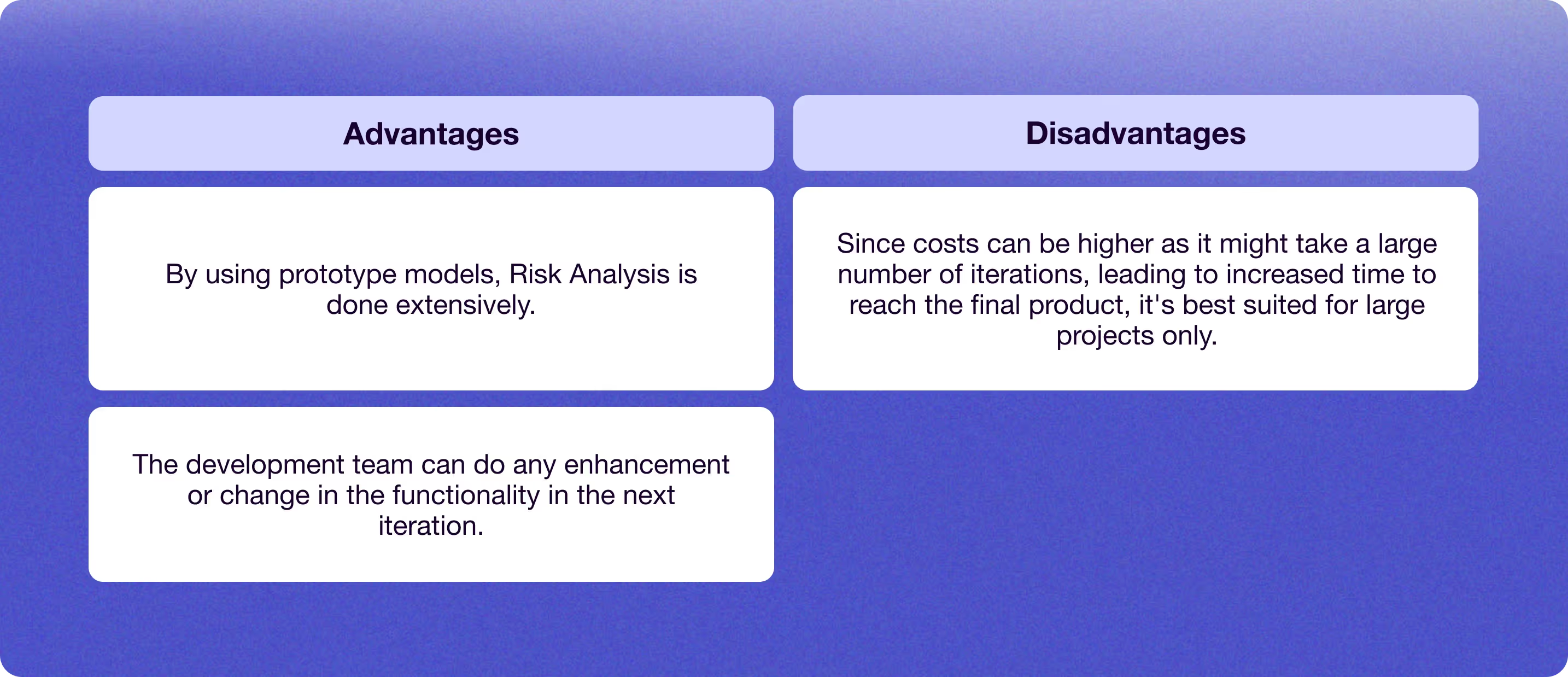
Big bang model
The big bang model focuses on software development and coding resources with little or no planning. Since requirements are analyzed and implemented as they arise, this model works best for small projects with reduced-size development teams.
It is also helpful for academic software development projects as it is an ideal model where requirements are either unknown or the final release date is not given.
Big Bang Model does not have a specific previously designed process and does not require extensive planning and scheduling.
Development teams perform the requirement analysis and coding, developing the product as per their understanding.
There is no testing team, and since no formal testing is done, there's a higher probability of failure for the project.

Agile Model in SDLC
Agile methodology is a practice that promotes continued iterations of development and testing during the SDLC process of any project by dividing the entire scope of the project into small, incremental builds that are provided in iterations, each lasting from one to three weeks.
The Agile Model combines Iterative and Incremental models, focusing more on flexibility while developing a product rather than on specific requirements.
In Agile, a product is not built as a complete version in one go but instead broken into small incremental builds in terms of features, with the next build built on previous functionality.
Agile iterations are termed sprints, each lasting for two to four weeks, at the end of which the product owner verifies the application for delivery.
Customer feedback is collected for improvements and bug fixes, and his suggestions and enhancements are included in the following sprints.
Testing is conducted during each sprint to minimize the risk of potential failures.
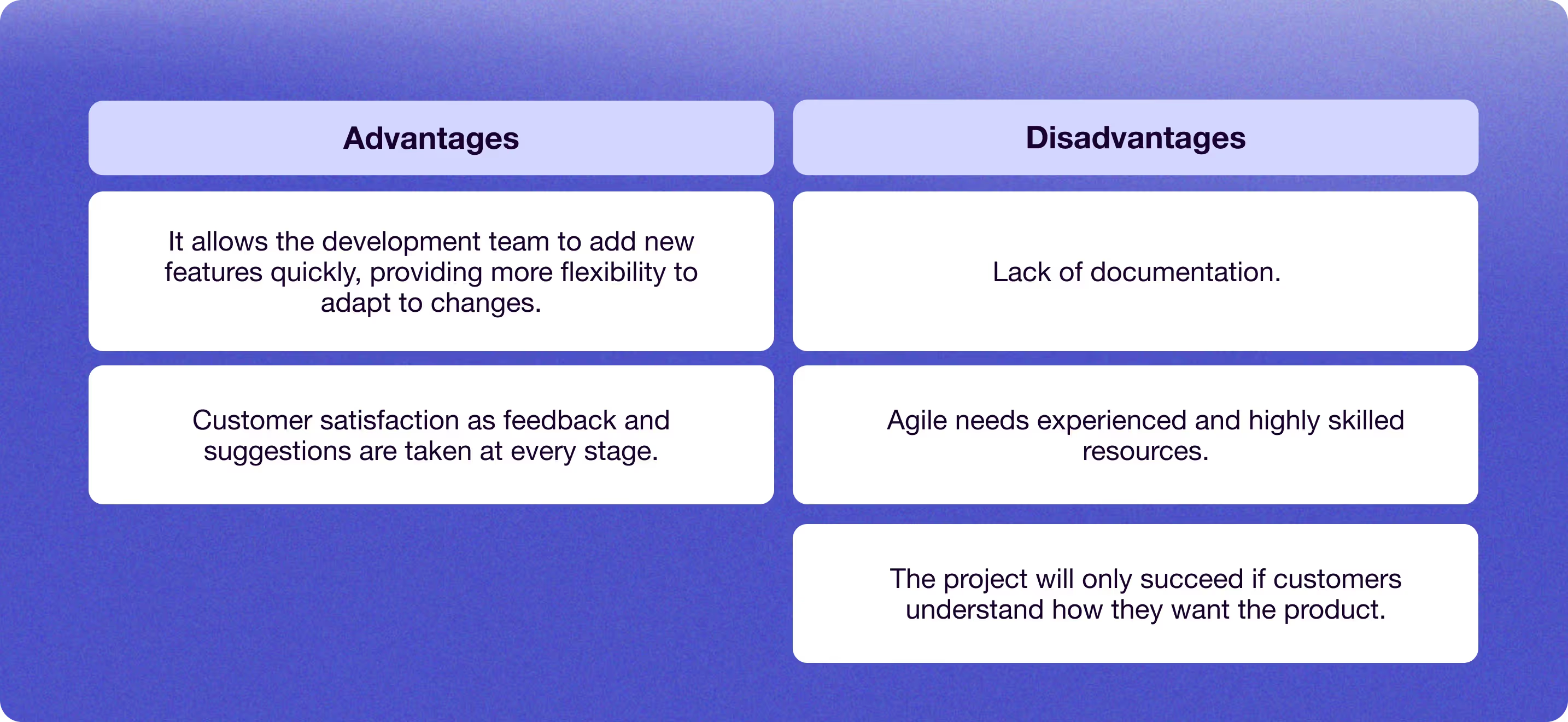
Conclusion
Adherence to a suitable life cycle is essential for completing any project, and different Software Development Life Cycle models have their strengths and weaknesses. The ideal model for any project can be determined by requirements (whether explicit or unclear), System Complexity, Size of the Project, Cost, Skill limitation, etc. The software development life cycle is a crucial process that can help teams develop and deploy software, including necessary fixes, by utilizing best practices and methodologies.
In the coming years, organizations will undoubtedly adopt a DevOps approach and a more evolved methodology to their SDLC, where security is built into the entirety of the SDLC. Organizations must be strategic in selecting tools and frameworks that support and enhance these methods to guarantee the success of these modern software development models. As proven leaders in the application development field, we offer a comprehensive suite of products and services perfectly tailored to this effort.
Drop us a line here to learn more about implementing an SDLC model for your company's projects today!
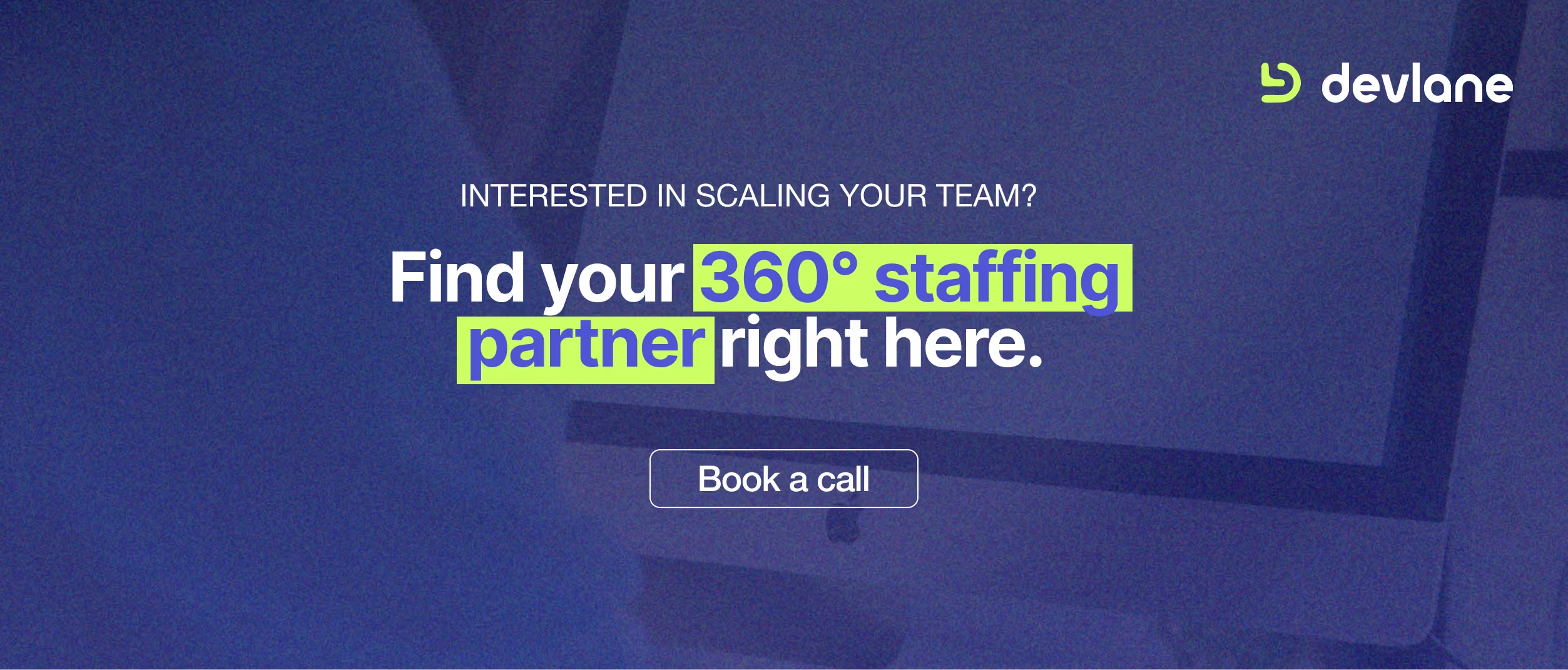
Other Blog Posts
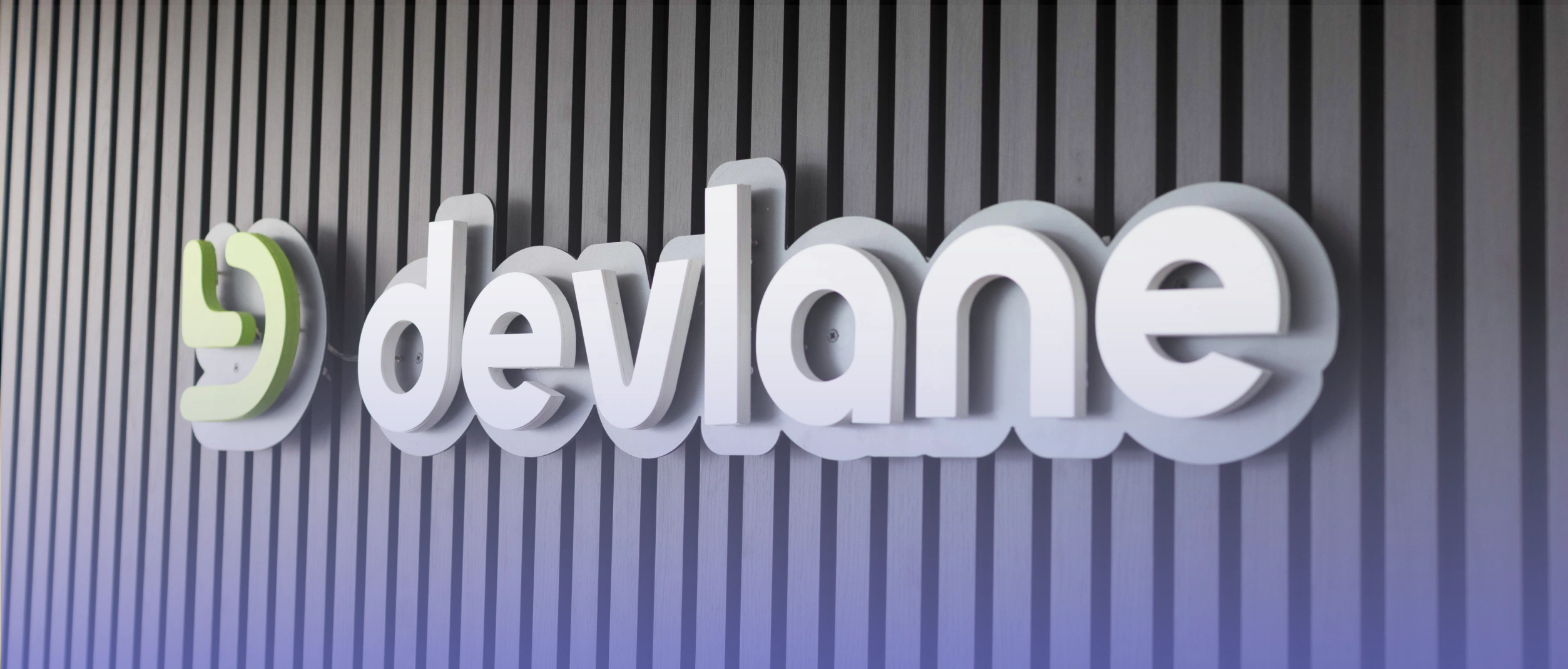
What 2025 meant for Devlane: A year of growth and innovation







